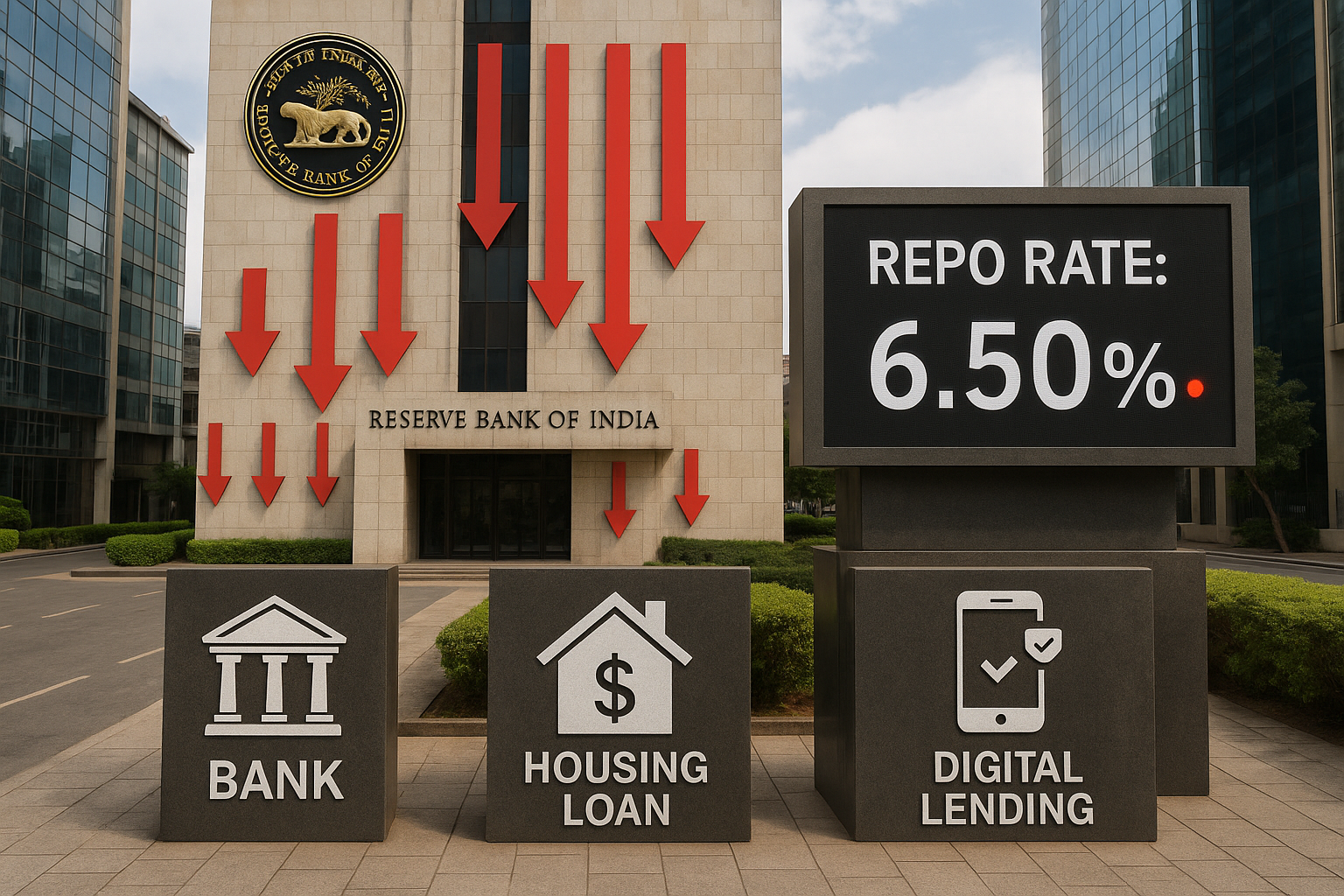The Reserve Bank of India (RBI) has signaled that monetary policy transmission is occurring more effectively across the financial system, bolstering the case for a potential rate cut in the coming months. New RBI data shows that the weighted average lending rates (WALR) on fresh rupee loans have dropped by 50 basis points since February, indicating banks are swiftly passing on policy cues to borrowers.
With June 2025 inflation data supporting the disinflation narrative and loan rates softening, markets and analysts are now increasingly factoring in a possible repo rate cut in the August or October MPC meetings.
Background
Since February 2023, the RBI has held the repo rate steady at 6.50%, maintaining a ‘withdrawal of accommodation’ stance. The central bank’s focus has been to contain inflation without choking growth.
However, new figures released in the RBI’s Monetary Policy Report suggest that the impact of policy tightening has fully percolated through the system, with incremental borrowing costs falling, particularly for fresh loans issued after February 2025.
Key Observations by the RBI
-
WALR on fresh loans dropped by 50 basis points between February and June 2025.
-
Deposit rates, in contrast, remained relatively stable, preserving banking system margins.
-
The RBI notes credit growth remains robust, especially in housing, MSMEs, and unsecured retail, showing no signs of weakening demand.
This dynamic—lower lending rates without a corresponding fall in credit demand—suggests favorable macro conditions for a calibrated policy easing.
Market Interpretation & Forward Outlook
Bond markets have already started pricing in a potential 25 bps repo rate cut, possibly in August or October, depending on upcoming inflation prints and global monetary policy cues.
“The RBI’s latest update confirms a well-functioning transmission mechanism. With core inflation easing and global commodity prices stable, a policy rate cut is increasingly likely,” said CA Manish Mishra, Fixed Income Analyst.
“Banks cutting rates on new loans is a sign of trust in future liquidity and stability. The MPC may take a dovish turn if this trend sustains into July,” added CA Manoj Kumar Singh, former Treasury Head at a leading PSU bank.
Broader Economic Implications
-
Retail borrowers may continue to see cheaper EMIs, particularly for housing and personal loans.
-
NBFCs and fintech lenders will benefit from reduced cost of funds, supporting deeper credit penetration.
-
Corporate borrowers, especially in infra and capex-heavy sectors, may revisit expansion plans if rate cuts become visible.
The RBI’s transmission comfort also hints at healthy banking liquidity and confidence in inflation control—a marked shift from the rate hike-heavy narrative of 2022–2023.
Conclusion
The RBI’s latest report reinforces the view that monetary transmission is no longer a bottleneck, giving policymakers greater flexibility. With loan rates dropping and credit growth holding, the stage may be set for a moderate rate cut cycle in H2 FY26. The next Monetary Policy Committee (MPC) meeting will now be closely watched for any change in tone or action.












